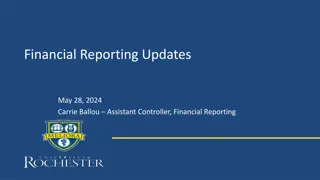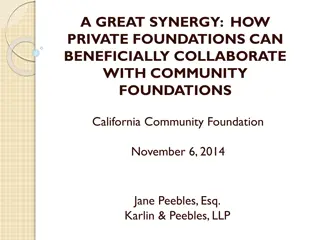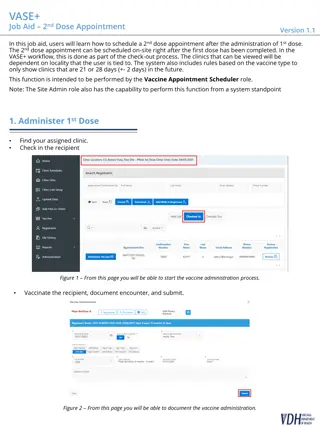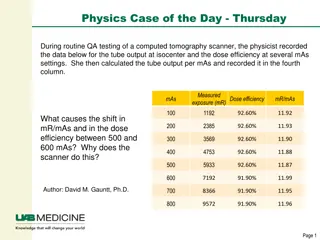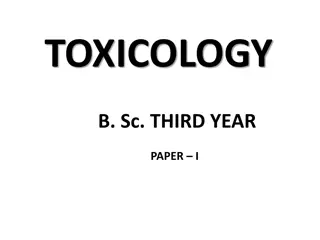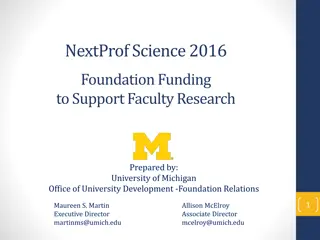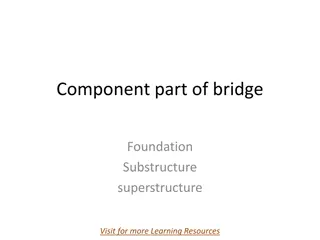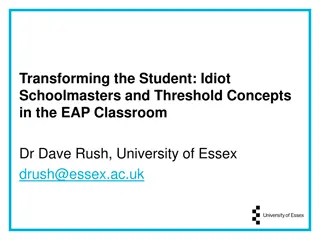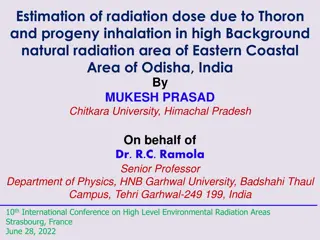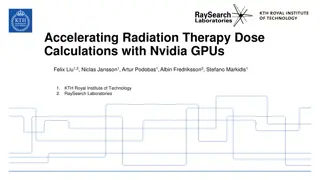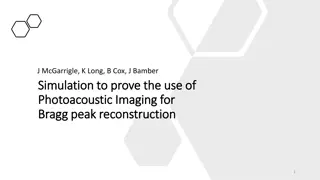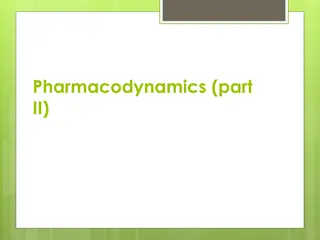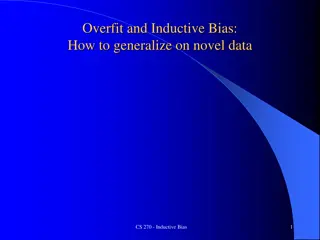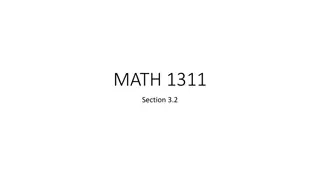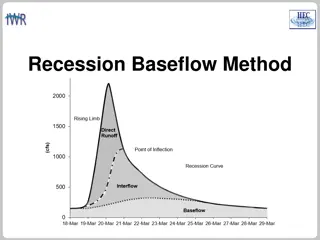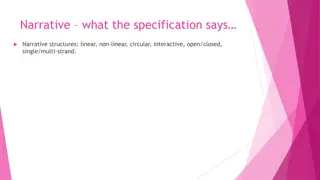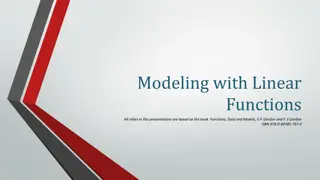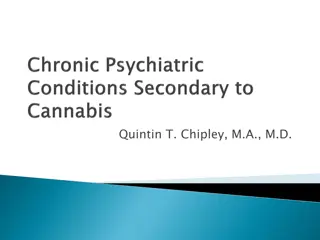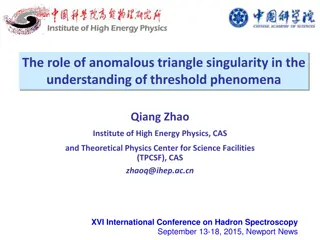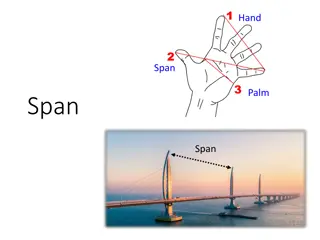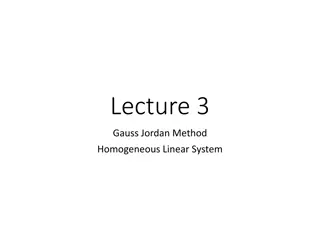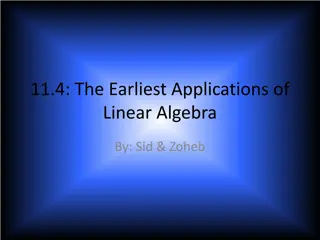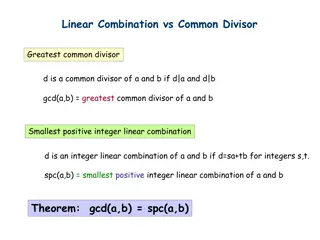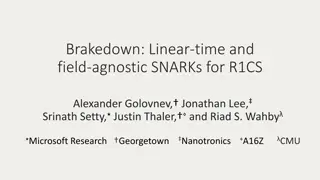Historical Foundations of the Linear Non-Threshold Dose Response Model
The journey of the Linear Non-Threshold (LNT) dose response model for cancer risk assessment unfolds through the work of scientists like Muller, Timofeeff-Ressovsky, Zimmer, and Delbruck. Muller's initial gene mutation research led to the acceptance of LNT, which was further integrated with the single-hit mechanism concept. However, subsequent experiments and findings challenged the model's basis, emphasizing the need for further research and replication due to significant limitations.
Download Presentation

Please find below an Image/Link to download the presentation.
The content on the website is provided AS IS for your information and personal use only. It may not be sold, licensed, or shared on other websites without obtaining consent from the author. Download presentation by click this link. If you encounter any issues during the download, it is possible that the publisher has removed the file from their server.
E N D
Presentation Transcript
The Historical Foundations of the Linear Non-Threshold Dose Response Model for Cancer Risk Assessment Edward J. Calabrese, Ph.D. Professor of Toxicology University of Massachusetts Phone: 413-545-3164 E-mail: edwardc@schoolph.umass.edu 1
HOW LNT WAS BORN AND SUSTAINED A Story of Mistakes, Deceptions, and Failed Public Policy 2
NO!! He induced mostly massive gene deletions. Many notable geneticists disputed Muller on this topic, showing significant limitations in his argument and data. Muller was eventually proven wrong with modern nucleotides measurement techniques. His great gene mutation discovery wasn t so great.
Muller accepted the LNT dose response model for ionizing radiation and mutation based on two independent student projects using extremely high doses. (His own research had not supported linearity.) In 1930, Muller created the term Proportionality Dose Response and soon transformed this into a PROPORTIONALITY RULE . This phrasing dominated mutation literature during the 1930s.
1935 Timofeeff-Ressovsky, Zimmer, and Delbruck Created the single-hit mechanism of mutagenesis, based upon radiation target theory. The single-hit mechanism was mathematically demonstrated to account for the features of the LNT model, thus integrating the two concepts. This model was wrong from the start, being based on Muller s incorrect gene mutation conclusion.
Since he was loosing the gene mutation argument, Muller undertook an experimental initiative to test his gene mutation explanation and LNT.
Mullers student demonstrated that X-ray-induced mutation in the mature spermatozoa of the fruit fly appeared independent of dose rate. These findings supported the hypothesis that X-ray- induced mutations were irreparable and cumulative.
Total dose, therefore, rather than dose rate was the best predictor of genetic damage, supporting LNT. This study had important experimental limitations, some very serious and needed replication.
Goal: understand the nature of the dose response in the low dose zone for germ cell mutation. Experiments would test dose rate vs cumulative dose for risk assessment purposes. Use of Mouse Model Dr. Donald R. Charles Use of Drosophila (Fruit Fly) Dr. Curt Stern
Results and Issues Charles s Research 400,000 mice, no meaningful publications. Stern s Research Highly significant; findings affected scientific beliefs and national policy on dose response.
Acute Exposure Data Warren Spencer and Curt Stern indicated a linear dose response and were widely accepted. Weaknesses of the Spencer/Stern findings were never acknowledged nor recognized. Poor temperature control Inconsistent instrument calibration Poor matching of control and treatment experimental days Combining of treatments with the same total dose but different dose rates Lack of data adjustment for genetic lethal linkages Improper statistical analysis at low dose
Chronic Exposure Data (dose rate 1/13,000 of the lowest dose used by Spencer/Stern) Ernst Caspari and Curt Stern supported a threshold dose response and challenged the belief that mutation damage was independent of dose rate. The chronic findings posed a serious challenge to the LNT concept.
Stern challenged Caspari over control group validity. Documentation in literature supported Caspari controls Stern backed down
Sterns new strategy: Create discussion that discounts Caspari findings Stern suppressed the significance of the threshold findings by demanding in the discussion of their paper that the data not be accepted until it could be determined why the response was not linear (i.e. disagreed with Spencer s findings; published the paper in his own journal (Genetics) without independent peer-review).
Did Muller see the Caspari findings prior to his Nobel Prize lecture? Yes, November 6, 1946 letter and Muller s answer to Stern s November 12, 1946 letter.
Muller used his Nobel Prize lecture to demand the rejection of the long-standing threshold dose response model for genomic mutation. Muller: LNT should replace the threshold model.
This lecture received enormous publicity and influenced regulators, the media, and the scientific community on public health concerns with ionizing radiation even at very low doses.
Prior to his Nobel Prize lecture, Muller knew of the threshold supportive study by Caspari and Stern (November 12, 1946 letter). It was the strongest study to date with the lowest dose rate tested. Muller recognized the challenge to LNT and strongly supported study replication. Muller found no technical issues with this paper. Letter exchanges indicate that Muller s views were similar five weeks before and five weeks after his Nobel lecture (January 14, 1947 letter).
Following the internal review by Muller of the Caspari and Stern paper, the threshold conclusion was dropped and Muller s name was added to the acknowledgements.
Replication studies of Uphoff, as directed by Stern, were problematic because of extremely low control group values, making the data un-interpretable . This happened on several occasions. Stern acknowledged this issue in a classified publication for the Atomic Energy Commission. Stern blamed low controls of Uphoff s replication study on investigator bias .
Stern published a meta-analysis of the five Manhattan project experiments. He now used the un-interpretable data (Uphoff), treating it as normal, while reviving his unsupported criticism of the Caspari study. Such changes led to a linear interpretation. The meta-analysis was a one-page report/table. He promised to provide all methodological details and data in a subsequent report and never did.
The Caspari threshold study was marginalized based upon rumors that its control group was aberrantly high and that its findings were unreliable.
The Caspari controls: Stern claimed that Casparis control group values were aberrantly high. However, the literature and unpublished data by Muller supported Caspari. The basis of these conclusions are found in letters, cables, and manuscripts of Stern and Muller.
In the early 1950s, Muller repeatedly and inexplicably challenged the Caspari findings claiming in writing that his control group values were aberrantly high. Yet, the data of Muller both before and after the Caspari paper fully supported the Caspari interpretation. Why would Muller make such knowingly false comments repeatedly? Support LNT; Protect Reputation
Stern published a highly acclaimed genetics textbook with multiple editions, from 1950 onward. He claimed that the data of Uphoff and Spencer provided the basis for a linearity interpretation, ignoring Caspari s findings.
1956 Recommended the adoption of the LNT model for ionizing radiation induced genomic mutation, rejecting the threshold model. The Genetics Panel failed to assess the scientific basis for the LNT but adopted it based on an assumption that it was true. This conclusion is supported by evaluations of Genetics Panel transcripts and other source material. The decision not to provide documentation was accepted by the President of the NAS.
BEAR 1 decides not to assess 10 year study of genetic damage in children of Atomic Bomb survivors, using on Fruit Fly and mouse data. Study directed by Panel member, Jim Neel. Neel secretly gives report to British Genetics Panel The Neel study has a major impact on the British Report.
Scientific Misconduct: Falsification Estimations of genetic risk Misrepresented the number of geneticists providing estimates Misrepresented the range of variability and uncertainty amongst estimates Deliberately omitted data since it would affect acceptance of their recommendations
This recommendation was soon applied to somatic cells for cancer risk assessment by the NCRPM in 1958 incorrectly assuming that findings with mature spermatozoa could be generalized to all cells. Genetics Panel members testified before Congress strongly emphasizing the Spencer and Uphoff findings to support their linearity recommendation.
Recommendations of the BEAR I Genetics Panel provided the foundation for cancer risk assessment for chemicals and radiation worldwide. This is the most significant action in the history of environmental risk assessment.
The BEAR I Genetics Panel recommendation was the result of an orchestrated deception by key leaders of the radiation genetics community, Curt Stern, Hermann Muller, and eventually the entire NAS Genetics Panel.
The principal goal of these individuals was to support the LNT model and advocate its use in risk assessment.
December 1958, Russell et al. report significant dose rate findings in male (spermatogonia) and female (oocytes) mice. At low dose rates, X-ray/gamma-ray-induced mutation was significantly decreased compared to the same total dose when given acutely. These findings suggested the existence of DNA repair and the possibility of a threshold.
Research with female oocytes revealed a threshold effect at low dose rate (i.e., 27,000-fold greater than background radiation). Research with male spermatogonia showed a 70% decrease in mutation but did not achieve a threshold.
Genetics Subcommittee rejected the conclusion of the BEAR I Genetics Panel, that mutation rate was independent of dose rate. They accepted the new findings of Russell. Genetics Subcommittee retained the LNT recommendation, because the spermatogonia responses had not regressed to control values as was the case with oocytes.
EPA accepts linearity for ionizing radiation for induced cancer risks based on the recommendation of the BEIR I, 1972 dose rate interpretation. The Russell studies became the homing principle for the LNT concept.
Paul Selby revealed an error in Russells control group mutation rates. Russell and Selby adjusted/corrected the control group values. The correction resulted in the male spermatogonia values of 1972 becoming indistinguishable from control values. If correction had been made in 1972, the LNT would not have been supported by the Russell data.
KEY LNT FINDINGS IN PERSPECTIVE Muller s Gene Mutation Claim now proven incorrect LNT Single-Hit Model is based on Muller s incorrect interpretation Muller was Deliberately Deceptive in his Nobel Prize Lecture Muller and Stern Misrepresented Manhattan Project findings to promote LNT 38
NATIONAL ACADEMY OF SCIENCES RADIATION GENETICS PANELS BEAR I GENETICS PANEL - 1956 Misrepresented the scientific record to promote acceptance of LNT BEIR I GENETICS SUBCOMMITTEE - 1972 Department of Energy Research - >2 million mice Provided new basis for LNT Foundation for EPA LNT Major error discovered 2 decades later Correction indicates a threshold or hormetic dose response should have been established 39
WHY LNT SUCCEEDED Producing Gene Mutations was a major advance This development overwhelmed the field Contemporary gene mutation criticism was very strong but neither side could win decision Manhattan Project massive project/influence 40
WHY LNT SUCCEEDED Dropping the A Bomb frightened the world Nobel Prize created major platform for Muller s ideology Cold War above ground testing of atomic bombs Rockefeller Foundation/NAS created a separate Genetics Panel and stacked the members with those promoting the LNT ideology NAS (i.e., appeal to its authority) Ideology Lies, Deception 41
HISTORY OF LNT-Bottom Line Scientific/toxicology community got the LNT question wrong Self-Interest and scientific misconduct lead to the LNT All the errors, deceptions and mistakes were given a pass The scientific/toxicology and regulatory communities failed in their oversight, review and leadership 42
Entire regulatory programs and public education activities are based upon such deceptive historical practices.
Yes, within a model uncertainty framework that optimizes features of the leading three risk assessment models (i.e., LNT, threshold, and hormesis)
Integration of Hormesis and LNT for Risk Assessment Response LINEAR MODEL (LNT) 10-4 Risk/LNT Background HORMETIC MODEL Optimized Benefit/Hormesis (tumor incidence reduced by 30-60%) Dose



